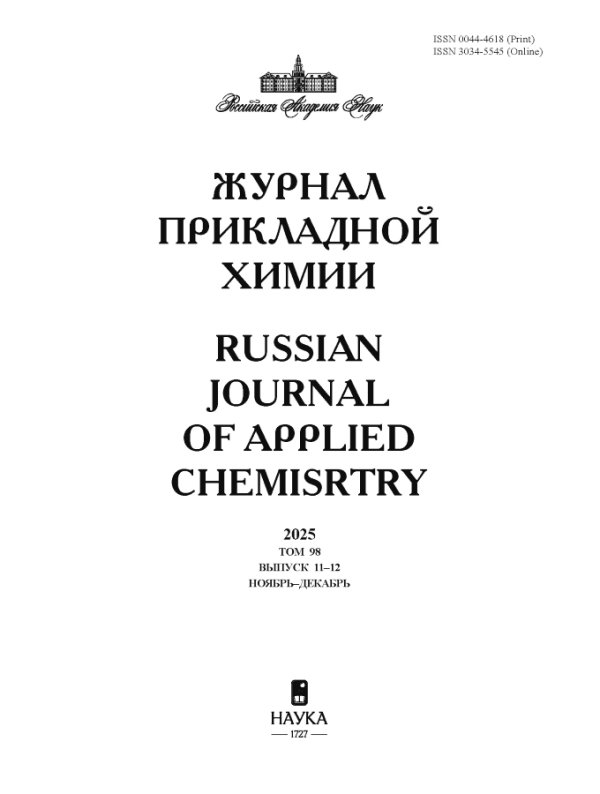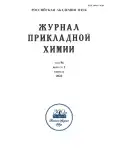Расчет и моделирование схем переработки в метанол дымовых газов теплоэлектростанций
- Авторы: Галанова Е.Г1, Магомедова М.В1, Чистяков К.А2, Афокин М.И1, Баженов С.Д1
-
Учреждения:
- Институт нефтехимического синтеза им. А. В. Топчиева РАН
- Институт органического синтеза им. И. Я. Постовского УрО РАН
- Выпуск: Том 96, № 2 (2023)
- Страницы: 151-161
- Раздел: Статьи
- URL: https://journals.rcsi.science/0044-4618/article/view/247273
- DOI: https://doi.org/10.31857/S0044461823020032
- EDN: https://elibrary.ru/OUDMOC
- ID: 247273
Цитировать
Полный текст
Аннотация
Рассмотрено несколько схем переработки дымовых газов, выбрасываемых теплоэлектростанциями, в метанол товарного качества, различающихся стадиями получения сырья для синтеза метанола. Исследована зависимость выхода метанола, величины энергетического коэффициента полезного действия (КПД) и показателя углеродного следа технологии в целом (от стадии улавливания СО2 из дымовых газов до стадии выделения метанола) от состава дымовых газов (концентрации СО2) и температуры их потока. Рассмотрен вариант переработки дымовых газов с высокой исходной температурой потока по схеме, включающей высокотемпературные стадии выделения СО2 и электролиза. Показано, что данная схема с учетом рекуперации тепла потоков и генерации водяного пара характеризуется высоким энергетическим КПД.
Ключевые слова
Об авторах
Е. Г Галанова
Институт нефтехимического синтеза им. А. В. Топчиева РАН
Email: acjournal.nauka.nw@yandex.ru
119991, Moscow, Russia
М. В Магомедова
Институт нефтехимического синтеза им. А. В. Топчиева РАН
Email: acjournal.nauka.nw@yandex.ru
119991, Moscow, Russia
К. А Чистяков
Институт органического синтеза им. И. Я. Постовского УрО РАН
Email: acjournal.nauka.nw@yandex.ru
620137, Yekaterinburg, Russia
М. И Афокин
Институт нефтехимического синтеза им. А. В. Топчиева РАН
Email: acjournal.nauka.nw@yandex.ru
119991, Moscow, Russia
С. Д Баженов
Институт нефтехимического синтеза им. А. В. Топчиева РАН
Автор, ответственный за переписку.
Email: acjournal.nauka.nw@yandex.ru
119991, Moscow, Russia
Список литературы
- Gentile G., Bonalumi D., Pieterse J. A. Z., Sebastiani F., Lucking L., Manzolini G. Techno-economic assessment of the FReSMe technology for CO2 emissions mitigation and methanol production from steel plants //j. CO2 Util. 2022. V. 56. P. 101852. https://doi.org/10.1016/j.jcou.2021.101852
- Беликов С. Е., Котлер В. Р. // Котлы тепловых электростанций и защита атмосферы. М.: Аква-Терм, 2008. C. 25-210.
- Зверева Э. Р., Фарахов Т. М. // Энергоресурсосберегающие технологии и аппараты ТЭС при работе на мазутах / Под ред. А. Г. Лаптева. М.: Теплотехник, 2012. C. 37-50.
- Грибков А. М. Выбор оптимальных размеров дымовых труб и внешних газоходов: учеб. пособие. Казань: Казан. гос. энерг. ун-т, 2016. 83 с.
- Аксютин О. Е., Ишков А. Г., Хворов Г. А., Юмашев М. В., Юров Е. В., Мохов В. П., Мохов О. В. Повышение энергетической эффективности магистрального транспорта газа ПАО "Газпром" на основе реализации высокоэффективных технологий утилизации тепловой энергии выхлопных газов газотурбинных установок газоперекачивающих агрегатов // Газ. пром-сть. 2017. № S1 (750). С. 64-69. EDN: YTKZPB
- Joo O.-S., Jung K.-D., Moon I., Rozovskii A. Y., Lin G. I., Han S.-H., Uhm S.-J. Carbon dioxide hydrogenation to form methanol via a Reverse-Water-Gas-Shift Reaction (the CAMERE Process) // Ind. Eng. Chem. Res. 1999. V. 38. P. 1808-1812. https://doi.org/10.1021/ie9806848
- Joo O.-S., Jung K.-D., Jung Y. CAMERE Process for methanol synthesis from CO2 hydrogenation // Stud. Surf. Sci. Catal. 2004. V. 153. P. 67-72. https://doi.org/10.1016/S0167-2991(04)80221-0
- Dunstan M. T., Donat F., Bork A. H., Grey C. P., Müller C. R. CO2 capture at medium to high temperature using solid oxide-based sorbents: Fundamental aspects, mechanistic insights, and recent advances // Chem. Rev. 2021. V. 121. N 20. P. 1268-12745. https://doi.org/10.1021/acs.chemrev.1c00100
- Sebbahi S., Nabil N., Alaoui-Belghiti A., Laasri S., Rachidi S., Hajjaji A. Assessment of the three most developed water electrolysis technologies: Alkaline Water Electrolysis, Proton Exchange Membrane and Solid-Oxide Electrolysis // Mater. Today: Proc. 2022. V. 66. N 1. P. 140-145. https://doi.org/10.1016/j.matpr.2022.04.264
- Buttler A., Spliethoff H. Current status of water electrolysis for energy storage, grid balancing and sector coupling via power-to-gas and power-to-liquids: A Review // Renewable Sustainable Energy Rev. 2018. V. 82. P. 2440-2454. https://doi.org/10.1016/j.rser.2017.09.003
- Stoots C. M., OʹBrien J. E., Condie K. G., Hartvigsen J. J. High-temperature electrolysis for large-scale hydrogen production from nuclear energy-Experimental investigations // Int. J. Hydrogen Energy. 2010. V. 35. P. 4861-4870. https://doi.org/10.1016/j.ijhydene.2009.10.045
- Zhang W., Zheng Y., Yu B., Wang J., Chen J. Electrochemical characterization and mechanism analysis of high temperature Co-electrolysis of CO2 and H2O in a solid oxide electrolysis cell // Int. J. Hydrogen Energy. 2017. V. 42. P. 29911-29920. https://doi.org/10.1016/j.ijhydene.2017.06.225
- Parigi D., Giglio E., Soto A., Santarelli M. Power-to-fuels through carbon dioxide Re-Utilization and hightemperature electrolysis: A Technical and economical comparison between synthetic methanol and methane //j. Cleaner Prod. 2019. V. 226. P. 679-691. https://doi.org/10.1016/j.jclepro.2019.04.087
Дополнительные файлы










